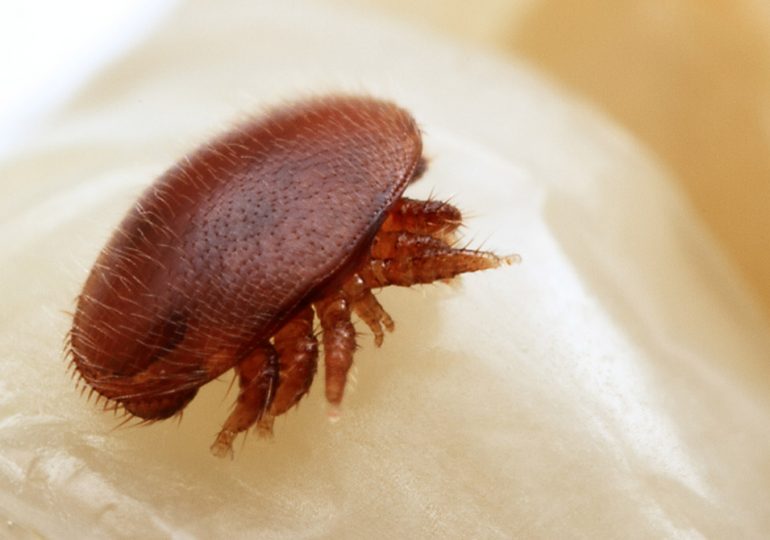 Véto-pharma
Véto-pharma Véto-pharma’s innovation team has tested 38 new active ingredients to combat varroa using its unique molecule screening method, in order to identify which molecules might be used to develop the varroa treatments of the future.
How will varroa be treated in the future? This question is troubling beekeepers and researchers all over the world. There are few products currently available that combine a satisfactory level of effectiveness and with limited use constraints for beekeepers. But the men and women working for the future of bee colonies at Véto-pharma are aware of the urgent need to develop new active ingredients that will make it possible for varroa to be sustainably controlled, and for treatments to be rotated risk-free, which is, unfortunately, not currently the case.

To achieve this, Véto-pharma has invested in innovation for many years. Véto-pharma’s experimental apiary was created 5 years ago, and the bee laboratory that accompanies it opened in 2015. This laboratory houses one of the company’s major innovation projects: the screening of new active ingredients to fight varroa. For this purpose, the innovation team developed a screening method unique to Véto-pharma, which makes it possible to evaluate active ingredients and identify the ones that would be both effective against varroa, and safe for the colonies. Not an easy feat! Molecules that are effective against varroa, whether chemical or organic in origin, are often highly toxic for bees. This is particularly true for many essential oils, which only achieve optimal effectiveness at levels that are very harmful to bees.
This is not the only difficult part of this exercise: obtaining enough living varroa mites is also a major challenge. To achieve this, Véto-pharma’s experimental apiary plays an important role, enabling the innovation team to source varroa mites for use in laboratory testing.
Thus, in 2018, 38 new molecules were evaluated by the Véto-pharma innovation team, and only 7 active ingredients showed promising results. These active ingredients will be reevaluated this year, along with 20 other new active ingredients.
In its experimental apiary, Véto-pharma can collect varroa mites for use in container tests to assess the effectiveness of new molecules.
The varroa mites and infested bees are then exposed to the molecules in a controlled environment, and their mortality is monitored to evaluate the effectiveness and toxicity of the active ingredients.
The screening project will continue until one or several active ingredients have been fully validated, in terms of their effectiveness against varroa and their safety for bees. At this research stage, these aspects are only validated “in vitro” or in containers for the bees. And afterwards? Once an active ingredient has been identified in the screening stage, it moves on to preclinical development (to define its pharmacological, pharmacokinetic and toxicological activity), and then to clinical development, in which a final formulation is chosen and tested through clinical trials. Clinical validation must be completed and a Marketing Authorization (MA) file must be prepared before the registration process can be initiated. All together, these stages take an average of 5 to ten years before a medication can be made available for use by beekeepers.
Molecules are subjected to a battery of systematic tests to study their chemical and pharmacological properties. This stage serves to identify the molecules that may be of therapeutic interest. Véto-pharma has developed its own method, tailored to bees, to evaluate molecules that might be effective and minimally toxic for bees.
Preclinical development begins with an initial stage, galenic development. This stage consists of developing the product formula, or the “recipe” for the medication.
When the active substance is incorporated into a galenic form, it is important to verify that its pharmacological properties are still expressed in the animal for which the medication is being developed, and the safety and tolerance of the medication must also be confirmed. Next, safety and residue studies are also carried out as part of this stage (toxicology)
When the galenic form and the final formula have been selected, the pharmacokinetic characteristics have been established, and the product tolerance has been confirmed as part of preclinical development, the last stage in the development of the medication can begin: clinical trials. The purpose of clinical trials is to confirm the medication’s properties in normal use conditions and “in the field”, as well as to demonstrate that it produces the desired therapeutic effect in the “real world”. All of the studies carried out during preclinical and clinical development are then compiled and collected in a marketing authorization request file, which is sent to the authorities for evaluation.
Before they can be placed on the market, veterinary medications prepared by a manufacturer must be granted a Marketing Authorization (MA) issued by the French Veterinary Medication Agency (Anses-ANMV) or the European Medicines Agency (EMA), depending on the type of procedure. Anses-ANMV issues MAs that are valid in France. The EMA issues centralized MAs that are valid throughout the European Union, including France.
Regardless of the procedure, the MA is granted based on the same requirements, which lead to a risk/benefit assessment.
In addition to the internal innovation project, Véto-pharma also seeks to collaborate with external partners involved in beekeeping research. Several collaborations are currently underway in France and abroad to optimize the search for tomorrow’s varroa treatments, whether in the form of new active ingredients, or new technologies or galenic forms that would increase the effectiveness of existing treatments.
With a laboratory dedicated to bees, an apiary of 200 hives that makes it possible to safely and privately conduct tests, and 10-person team dedicated to innovation, Véto-pharma has become a key collaborator for researchers and institutes in search of an effective partner who can help turn research projects into products that meet the needs of the beekeeping sector.
Véto-pharma deploys substantial resources in order to better meet the needs of beekeepers and the beekeeping sector of the future. Each year, the company invests 8 to 10% of its resources in innovation, and 10 of its employees are entirely dedicated to research.